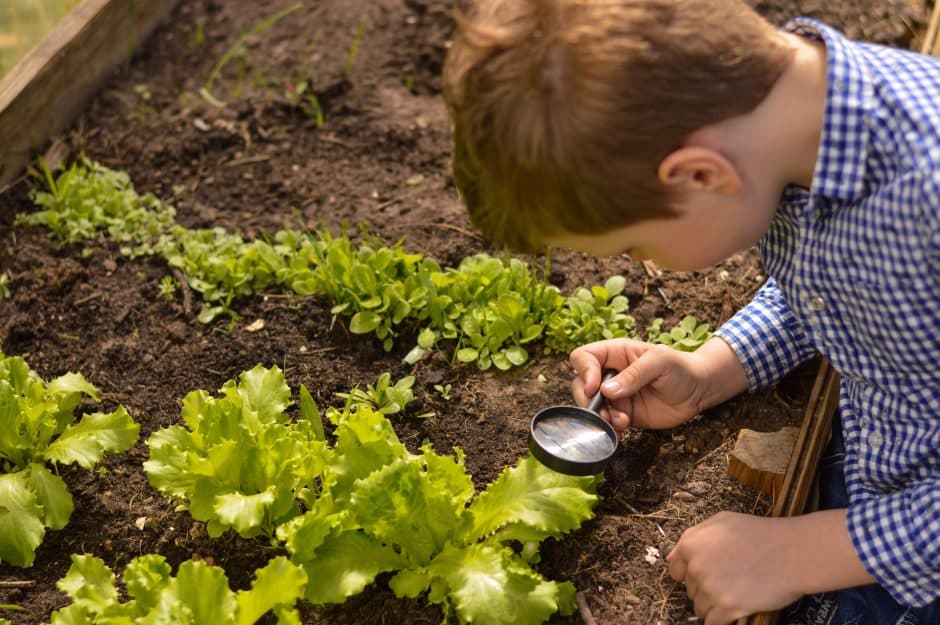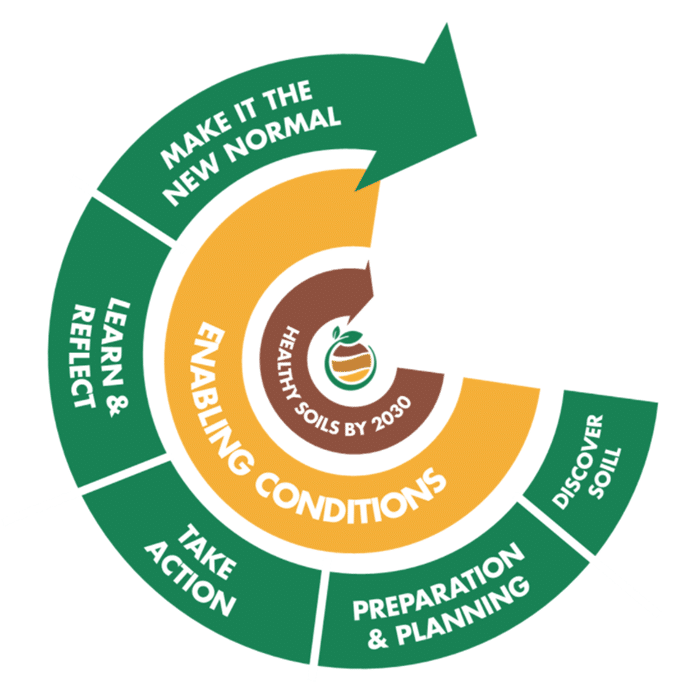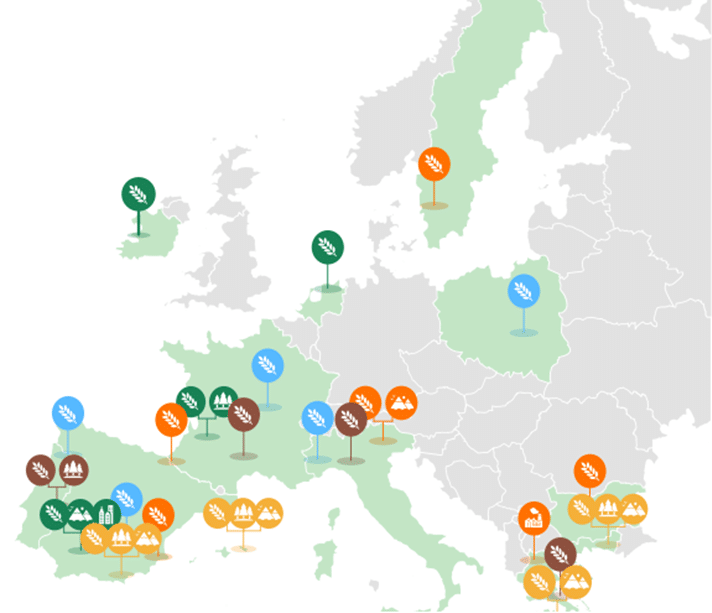Caring for soils: measure, monitor, manage

Until recently, the importance of healthy soils was a niche topic, with advocates mainly in the scientific community and non-governmental organisations. Yet the dramatic increase in impacts of climate change in Europe, from droughts to floods, and their disastrous effects on food supplies, have brought soils to the attention of policymakers.
EU-wide regulation is still lagging. The first-ever law on soil health monitoring remains deadlocked in trilogues. Thanks to EU funding and a new ‘mission’ approach, however, other, more action-oriented initiatives are flourishing. Climate KIC is involved in a range of such actions, and we have spoken to Tessa Finch, who’s leading on learning and capacity building for some of these projects, about what’s the latest happening on the ground.
Why is soil health important?
Life on Earth depends on healthy soils. Soil is the foundation of our food systems. It purifies water, contributes to mitigating climate change by sequestering carbon, and enhances resilience, for example through water retention. It also plays a key role in our cultural heritage, supporting biodiversity, landscapes, and the economy.
Sadly, however, it is estimated that between 60 and 70% of EU soils are unhealthy. To reverse this, we need to carefully manage and safeguard it for future generations. One centimetre of soil can take hundreds of years to form, but can be lost in just a single rainstorm or industrial incident.
Thankfully, the European Commission is increasingly committed to protecting and restoring our soils, with their EU Mission ‘A soil deal for Europe’, and we are feeling the momentum grow.
This mission is driving a wide range of initiatives. Can you tell us about one that you’re working on?
The main goal of the Mission Soil is to establish 100 ‘living labs and lighthouses’ to lead the transition towards healthy soils by 2030. Living labs are places to literally experiment on the ground, bringing together researchers, farmers, foresters, spatial planners, land managers, and citizens to create innovative solutions for soil health.
A crucial part of this is to coordinate, support, expand, and promote this network. Through the SOILL Startup project, of which Climate KIC is a partner, we’re helping lay the foundation for this ambitious initiative. The project is establishing a digital hub to help actors across Europe collaborate and exchange with each other. We’re also developing training, supporting tools, and standardised methodologies for monitoring and evaluation. And we’re helping spread this wealth of knowledge through regular events and matchmaking activities.
How is Climate KIC contributing?
Our goal is simple: to support the soil health living labs with capacity building, or in other words, access to resources, experts and knowledge, online and in-person trainings, networking, and a helpdesk.
To start, Climate KIC surveyed the existing 25 living labs to better understand what their needs and challenges are. It’s worth highlighting that these living labs can be very different – some have already quite a lot of expertise, while others are at the early stages. So there is a lot of potential for them to learn through exchange. Their needs also vary, depending on where they are located and what are specific conditions of local soils, type of agricultural systems, what kind of partners are involved. However, some topics and practices resonated widely, such as technical soil health themes like soil indicators and sampling, how to run a living lab, and stakeholder engagement.
With this information, we put together a ‘learning journey’ to support these living labs throughout their growth, from set-up to implementing activities. The journey is structured in a series of steps that a lab might take, and is designed to be iterative, highlighting the benefits of continuous learning. Living labs can also start the journey at any point, depending on how advanced they are, and then follow along the curve.
I see the main benefit of this not just in the in-depth learning, but the creation of an environment for exchange between the living labs.

The soil health learning journey designed by Climate KIC.
Can you tell us more about the participants and some examples of their activities or insights?
Living labs are established at a territorial, landscape or regional scale, with several experimental sites covered within them. So, each lab experiments based on real-life conditions grounded in the local context, operating with local end-users such as commercial farms or forest exploitations, urban green parks or industrial sites, and other actors such as NGOs or local authorities. This is key to make sure that research and innovation find solutions to the challenges that communities and land managers face on the ground.
One such living lab, GOV4ALL, based in Spain’s Murcia region, is looking at establishing governance and business models that not only protect natural resources, but also boost economic opportunities for rural communities based on long-term sustainability and soil health. Since its launch, five hubs for agriculture and innovation have sprouted across France, Greece, and Spain, to co-create regenerative soil management solutions and innovative business models to safeguard agriculture and foster rural development.

Map of the the first 25 Mission Soil living labs.
What’s next and how can people get involved?
The next steps will focus on bringing the learning journey to life, through a series of online trainings, in-person bootcamps, and an interactive hub of resources and tools for the soil health living labs. Based on these initial activities, we will design further learning opportunities that can be scaled to a larger network of labs, and tailored to each.
For those who are interested in following our journey and supporting healthy soils, you can sign up to the soil manifesto and register to the SOILL newsletter. We are also curious to learn more about any cutting-edge research or start-up that can support our network of soil health living labs, so keep an eye out for more opportunities to get involved.


